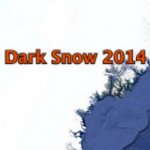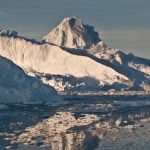ice melt
The Dark Snow Project is staring up again, it being almost summer(ish) in Greenland.
The results in the study of the odd 2012 winter are now in. That year, there was a huge spike in melting on the surface of Greenland. (Discussed here.) One idea is that a good part of this melting was caused by extra soot from extensive wildfires in North America, which increased the amount of solar energy collected on the ice surface.
The results confirm this, and the Dark Snow team is returning this year to collect more information.
Here's a video giving an overview of the project, from Peter Sinclair'…
Here are three iconic graphs (unfortunately, there are many, many more) showing just some of the clear observational evidence that we're changing the climate.
The first is the atmospheric concentration of carbon dioxide, measured at the Mauna Loa observatory in Hawaii. It shows the little ups and downs in concentration that varies with the seasons, but also the inexorable rise in this powerful greenhouse gas. There are now thousands of stations measuring these gases.
The second is the deviation from global average temperatures over the past 130 years. It also shows the natural variability (…
From NASA:
PASADENA, Calif. - An international team of experts supported by NASA and the European Space Agency (ESA) has combined data from multiple satellites and aircraft to produce the most comprehensive and accurate assessment to date of ice sheet losses in Greenland and Antarctica and their contributions to sea level rise.
In a landmark study published Thursday in the journal Science, 47 researchers from 26 laboratories report the combined rate of melting for the ice sheets covering Greenland and Antarctica has increased during the last 20 years. Together, these ice sheets are losing…

